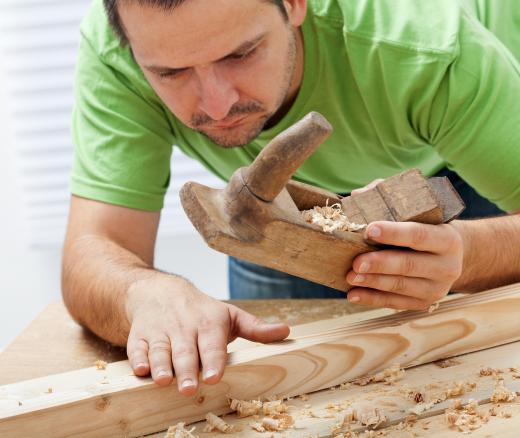A jack plane is a large, hand-held woodworking tool designed to allow its user to surface plane wood and remove large quantities of wood in a single swipe. Jack planes vary in size from 12 to 15 inches (30.48 to 38.1 cm) in length. It is meant only for rough shaping of boards; final board shaping is accomplished by smaller hand planes that are less likely to create tear out, where the fibers catch and break.
The jack plane should only be used to remove layers of wood following the grain of the board. Cross-cutting a board with a jack plane is not recommended because of the amount of material it is capable of removing at a time. The blade may remove wood by pulling it out of the board and leaving large divots that may be deeper than the finished size of the board. Keeping the jack plane moving smoothly with the grain of the wood will prevent needless chipping and tearing for a smoother surface.

This tool is called a jack plane because it is the "jack of all woodworking trades." It is long enough to flatten stock, but it is small enough to move through the wood easily. The most popular model of the jack plane is the #5. Other planes, like the #7 or #8, can remove more wood at a time, but that is because their blades are wider. They are heavier tools, though, so they are more work to handle.
The jack plane is a two-handed tool. The stock that is to be planed must be secured in a bench vice so it will not move while it is being worked. The blade must be kept sharp at all times in order for it to work properly and efficiently. The mouth of the jack plane must also be kept clear of build-up so the blade is able to do its work. The blade must also be properly adjusted before it is put to use.
Blade cut depth is adjusted using the adjusting nut. Turning the nut clockwise will cause the blade to protrude out of the mouth farther. The woodworker should not cut too much wood at a time. The angle of the blade must also be even at all times. This adjustment is made by sliding the lateral adjusting lever to the left or to the right in order to keep the blade level.
